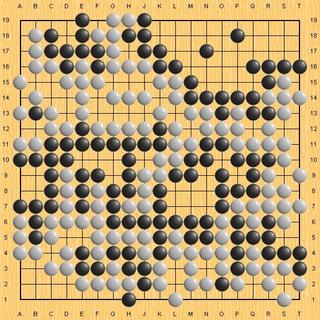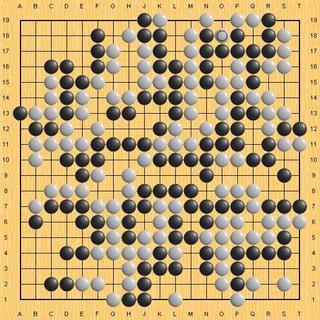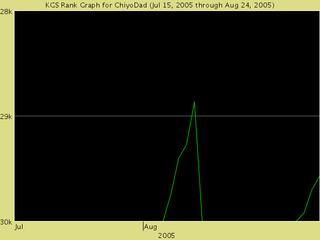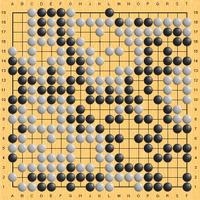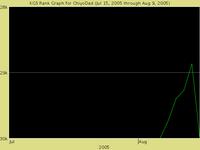Welcome to the first of ChiyoDad's
Kyu Reviews!
Title: Graded Go Problems for Beginners, Vol.1
Publisher & ISBN: Kiseido Press, 4906574467
Price & Sources: $15 from
Amazon
or from
Kiseido Online OrderingChiyoDad's Rank Suitability Assessment:
Introductory to BeginnerChiyoDad's Rating:
5/5 - Add it to your libraryReviewGraded Go Problems for Beginners, Vol.1 (heareafter referred to as GGPB1) is an exercise book which helps develop your ability to read formations and determine where best to play your next move in order to execute your tactical objectives. The preface section contains a brief introduction to the rules and a glossary of Japanese terms but this may not be sufficient for some absolute beginners. I recommend that it be purchased as a study supplement after you have started with an introductory book like
Go For Beginners
or
Learn To Play Go, Vol.1
or, at the very least, after you have completed
The Interactive Way to Go.
It's a highly recommended addition to your library if you're just starting out (introductory level) or a lower-level beginner (25kyu and below). For players in that fall into those categories, I rank it 5 out of 5. More advanced beginners will get less value from it.
The first half of the book provides the reader with four levels of Go problems to solve. The latter half provides the solutions and an explanation of the correct move. I liked the way that Kano Yoshinori had sequenced the problems since this helps build the reader's understanding.
The solution explanations can be a little sparse for some problems which is also why I recommend that GGPB1 be used in conjunction with a more thorough introductory book. Take for example problem 47 on page 18. While it makes a lot of sense for experienced players to play in an empty corner during the opening moves, absolute beginners with no introduction to strategy may not see this as an obvious choice. They may instead feel that it is better to immediately surround enemy stones to contain or kill them. (
Yes. We've all been there, and may even still be there.)
Having played more than 200 games as of this writing, I easily breezed through the first two levels of problems but began slowing down afterwards. Although I was still able to solve the problems of Levels 3 and 4 with 97% accuracy, I noticed that my response speed increased to 45-120 seconds as I tried to read out some of the problems. That can be detrimental in a timed game; particularly as the overall board complexity increases. I've seen the games of two of my stronger opponents sharply degrade when they are under time pressure.
Like many study guides, you get out what you put into them. To get the highest benefit from GGPB1, I recommend that:
- You take the time to understand the moves and countermoves that would result from your proposed solution and check the answer only after you are convinced that your move is the right one.
- You mark and repeat the problems that took you the longest time to solve.
- You run through the problems twice or thrice.
- During your repeat runs of the problems, try solving the them without reading the tactical objectives in the description. The text may say something like, "Black to kill with 1 move." Ignore that and just ask yourself, "What is the best move for Black or White in this formation?"
- If possible, use an application like Drago to compile and play the problems in rapid and random sequences. Drago measures the amount of time it takes for you to respond and keeps track of your first-response accuracy. Drago can also change the formation's board orientation and switch colors. With this approach, I have discovered that I can still misread a formation. This is a very good way to test yourself.
